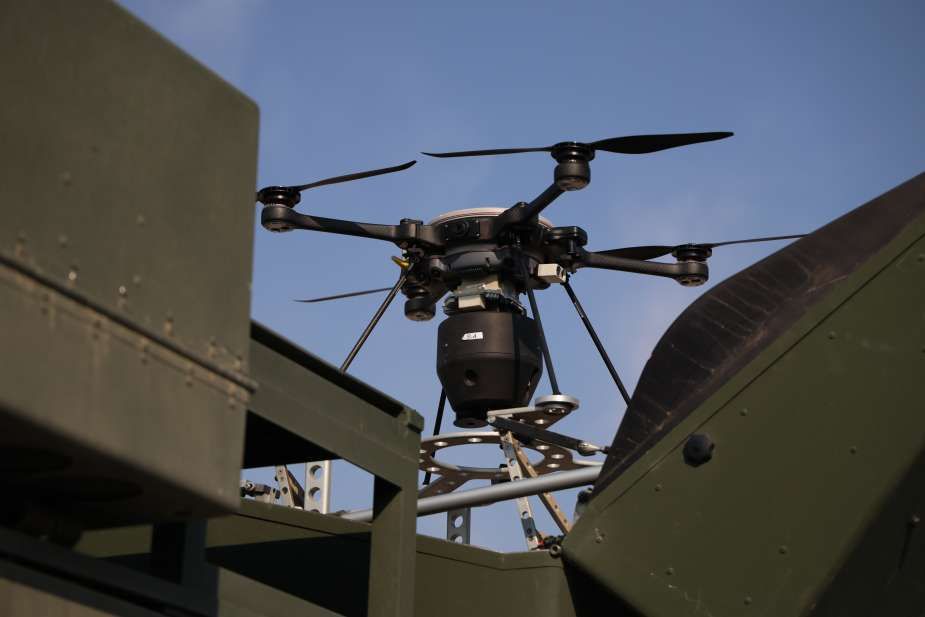Breaking News
Exclusive: US Army's Stryker NBCRV Now Equipped to Deploy Drone for Enhanced NBC Threat Detection.
The U.S. Army’s Stryker Nuclear Biological Chemical Reconnaissance Vehicle (NBCRV) has been enhanced with an innovative Sensor Suite Upgrade (SSU), enabling it to launch a UAV (Unmanned Aerial Vehicle) from its rear compartment in response to NBC (Nuclear, Biological, and Chemical) threats. This UAV deployment capability represents a critical advancement in real-time threat detection, sample collection, and rapid decision-making on the battlefield.
Follow Army Recognition on Google News at this link

U.S. soldiers from the 7th Infantry Division training with Stryker NBCRV at Dugway Proving Ground get an upgrade to their ability to detect and neutralize nuclear, biological, and chemical (NBC) threats. (Picture source: U.S. DoD)
The SSU (Sensor Suite Upgrade) enabled Stryker NBCRV (Nuclear Biological Chemical Reconnaissance Vehicle) armored vehicle can now launch an Unmanned Aerial Vehicle (UAV) upon identifying an NBC threat, allowing for rapid, remote analysis of potentially hazardous environments. The UAV is docked on the back of the NBCRV and is operated by a surveyor who, upon threat detection, deploys it to gather more comprehensive data. Using semi-autonomous and waypoint navigation, the UAV maneuvers over the affected area, collecting samples with its advanced bio-sensing payload. This sensor-equipped UAV is specifically designed to detect and confirm the presence of NBC agents swiftly, providing essential data without putting personnel at risk.
The UAV's bio-sensing payload collects and analyzes environmental samples to determine if hazardous agents are present. By repeatedly flying over the area, the UAV gathers robust data, ensuring a high level of accuracy in threat detection. This real-time information is relayed directly to commanders, allowing them to make informed decisions and issue protective measures to personnel on the ground.
Training exercises with the SSU-enhanced NBCRV allow soldiers to gain proficiency with the vehicle’s UAV deployment and threat identification processes. This capability enables them to stay ahead of evolving NBC threats and mitigate exposure risks proactively. Such training is essential to ensure that NBC reconnaissance teams can rapidly and accurately respond to threats, reducing the likelihood of exposure and enhancing overall mission safety.
This UAV-enabled NBCRV demonstrates the U.S. Army's focus on integrating advanced technology into its reconnaissance operations. By enhancing the reach and responsiveness of NBC detection capabilities, the Army significantly boosts the tactical advantage and safety of its forces in potentially hazardous environments. The SSU upgrade aligns with broader military goals to improve battlefield intelligence and operational readiness.
Integrating UAVs with bio-sensing payloads marks a vital step forward in the U.S. Army’s NBC threat detection capabilities. As NBC challenges continue to evolve, such advancements ensure that U.S. soldiers have the tools necessary to address threats safely and effectively, preserving lives and enabling mission success.

An unmanned aerial vehicle (UAV) mounted at the rear of the U.S. Army's Stryker Nuclear Biological Chemical Reconnaissance Vehicle (NBCRV) is deployed for advanced NBC threat detection. This UAV allows remote sample collection and rapid data transmission to enhance battlefield safety. (Picture source U.S. DoD)


























